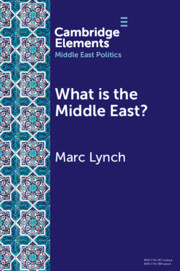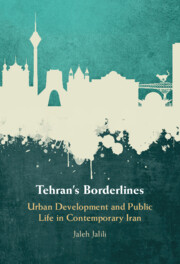246 results
Identifying the preserved network of irrigation canals in the Eridu region, southern Mesopotamia
-
- Journal:
- Antiquity , First View
- Published online by Cambridge University Press:
- 18 February 2025, pp. 1-7
-
- Article
-
- You have access
- Open access
- HTML
- Export citation
The first pottery in the Arabian Gulf: origins, production and distribution
-
- Journal:
- Antiquity , First View
- Published online by Cambridge University Press:
- 10 February 2025, pp. 1-16
-
- Article
- Export citation
Introduction
-
- Book:
- Mobile Manuscripts
- Published online:
- 30 January 2025
- Print publication:
- 06 February 2025, pp 1-38
-
- Chapter
- Export citation

What is the Middle East?
- The Theory and Practice of Regions
-
- Published online:
- 03 February 2025
- Print publication:
- 20 February 2025
-
- Element
- Export citation

Tehran's Borderlines
- Urban Development and Public Life in Contemporary Iran
-
- Published online:
- 30 January 2025
- Print publication:
- 06 February 2025
Introduction
-
- Book:
- The Last Caravan
- Published online:
- 09 January 2025
- Print publication:
- 23 January 2025, pp 1-38
-
- Chapter
-
- You have access
- Export citation
6 - Conclusion
-
- Book:
- The Last Caravan
- Published online:
- 09 January 2025
- Print publication:
- 23 January 2025, pp 259-263
-
- Chapter
- Export citation
Turbulent Takeoff—Hard Landing: State-Airline Relations and the Challenges of Early Commercial Aviation in Iran, 1923–1932
-
- Journal:
- Enterprise & Society , First View
- Published online by Cambridge University Press:
- 15 January 2025, pp. 1-27
-
- Article
-
- You have access
- Open access
- HTML
- Export citation

The Last Caravan
- Camels, Traders and Markets in the Middle East
-
- Published online:
- 09 January 2025
- Print publication:
- 23 January 2025
Mega-fortresses in the South Caucasus: new data from southern Georgia
-
- Article
-
- You have access
- Open access
- HTML
- Export citation
Digital Authoritarianism and the Global Technology Industry: Evidence from Iran
-
- Journal:
- Government and Opposition , First View
- Published online by Cambridge University Press:
- 07 January 2025, pp. 1-22
-
- Article
-
- You have access
- Open access
- HTML
- Export citation
2 - Pluralizers and Anti-Pluralists
- from Part I - Theory
-
- Book:
- Contesting Pluralism(s)
- Published online:
- 19 December 2024
- Print publication:
- 02 January 2025, pp 30-58
-
- Chapter
- Export citation
2 - Origins of Urbanization
-
- Book:
- World Cities in History
- Published online:
- 12 December 2024
- Print publication:
- 19 December 2024, pp 22-46
-
- Chapter
- Export citation
Awareness and acceptance of human papillomavirus vaccine in the Middle East: A systematic review, meta-analysis, and meta-regression of 159 studies
-
- Journal:
- Epidemiology & Infection / Volume 152 / 2024
- Published online by Cambridge University Press:
- 10 December 2024, e165
-
- Article
-
- You have access
- Open access
- HTML
- Export citation

Mechanisms of Social Dependency in the Early Islamic Empire
-
- Published online:
- 06 December 2024
- Print publication:
- 28 November 2024
-
- Book
-
- You have access
- Open access
- Export citation
11 - Egypt
-
-
- Book:
- States and their Nationals Abroad
- Published online:
- 04 December 2024
- Print publication:
- 05 December 2024, pp 256-275
-
- Chapter
- Export citation
There and back again: local institutions, an Uruk expansion and the rejection of centralisation in the Sirwan/Upper Diyala region
-
- Article
-
- You have access
- Open access
- HTML
- Export citation
8 - The Royal Advantage in Power Sharing and Blame Shifting
-
- Book:
- The King Can Do No Wrong
- Published online:
- 21 November 2024
- Print publication:
- 28 November 2024, pp 236-276
-
- Chapter
- Export citation
Introduction: The Ties that Bound the Societies of the Islamic Empire
-
-
- Book:
- Mechanisms of Social Dependency in the Early Islamic Empire
- Published online:
- 06 December 2024
- Print publication:
- 28 November 2024, pp 1-26
-
- Chapter
-
- You have access
- Open access
- Export citation
Chapter 4 - Violent Worlds
-
- Book:
- Insurgent Cultures
- Published online:
- 07 December 2024
- Print publication:
- 28 November 2024, pp 182-224
-
- Chapter
-
- You have access
- Open access
- HTML
- Export citation


